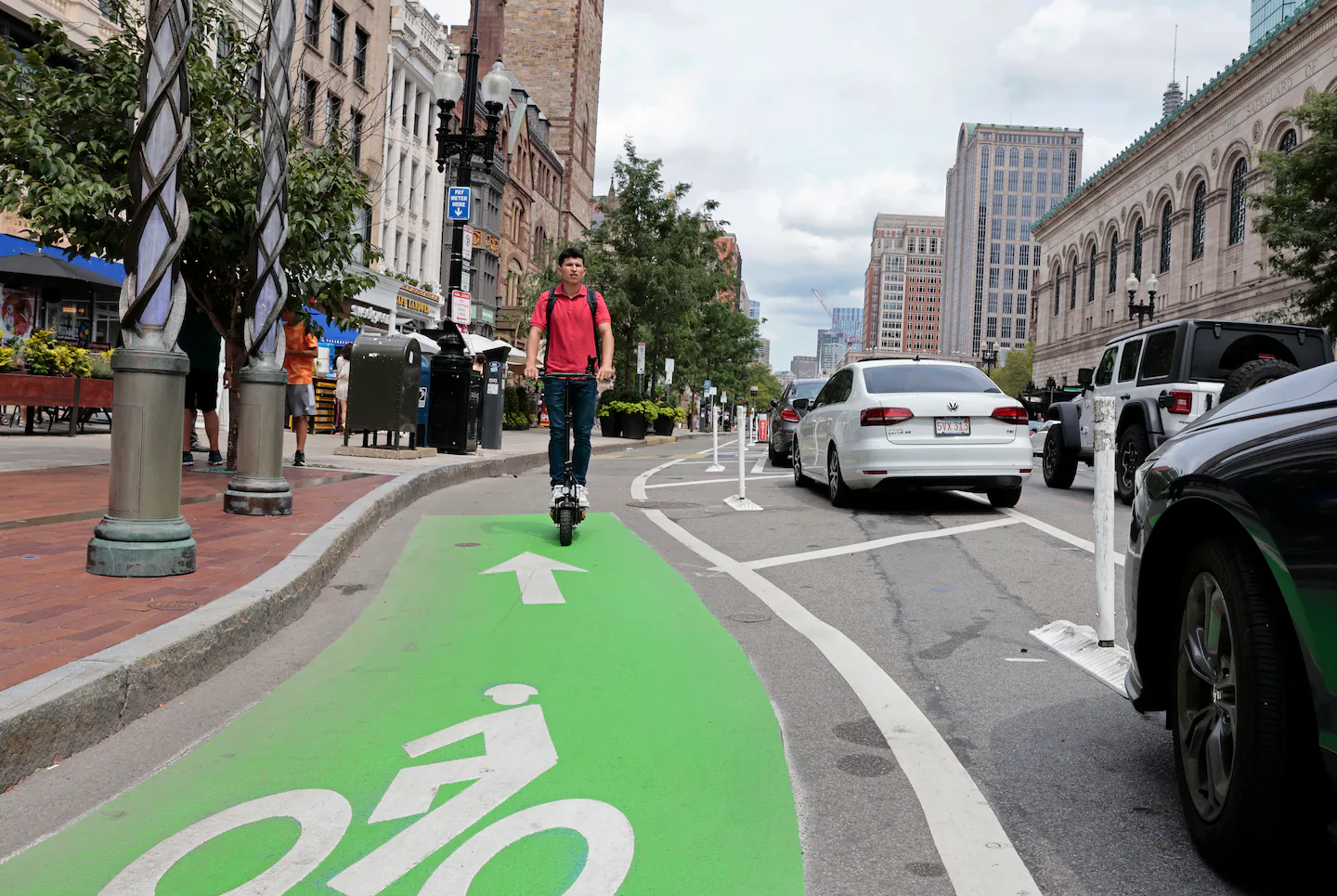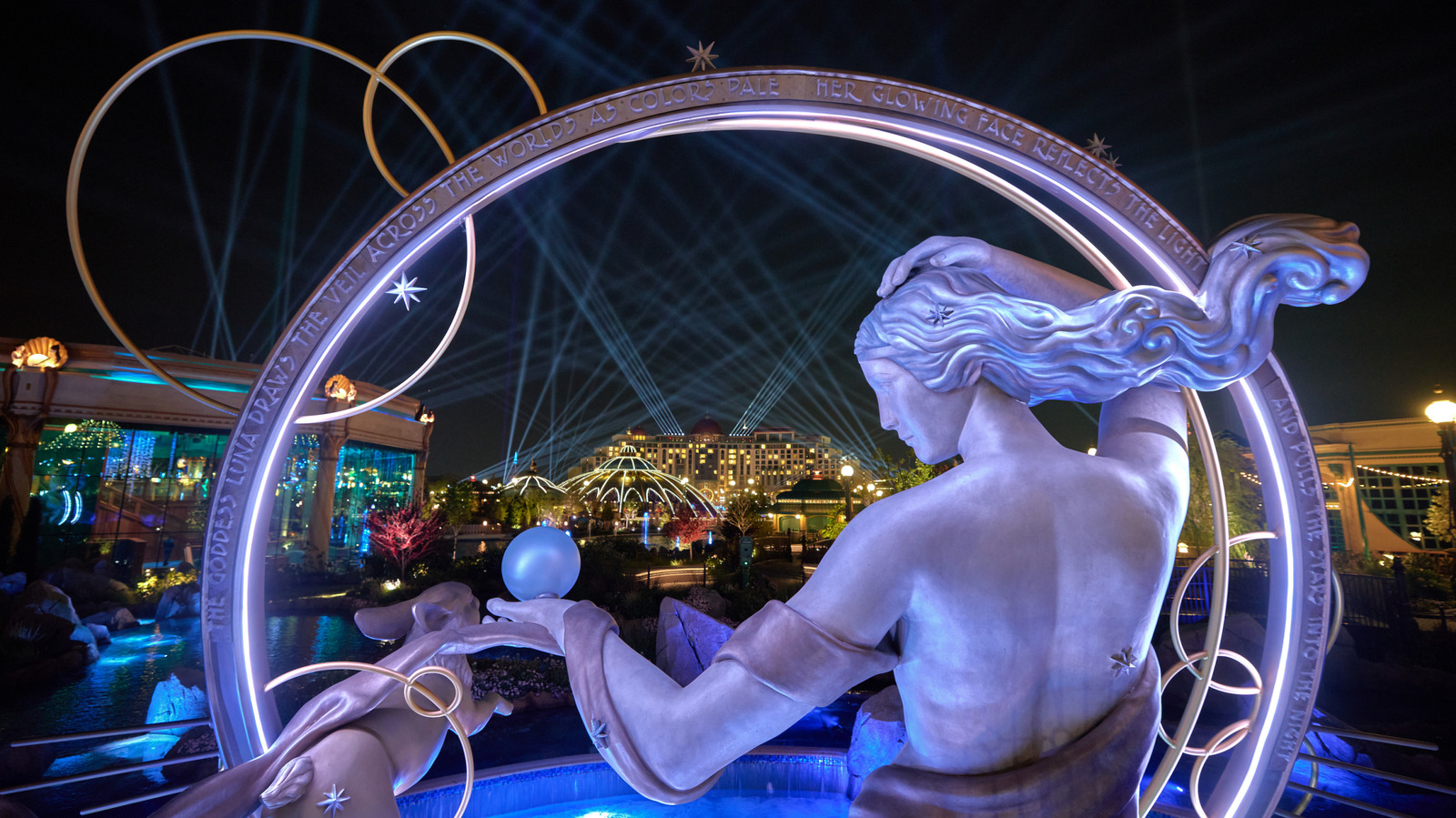
There the city has built a beautiful, modern, protected bike lane — a gem, with its rare protective row of parked cars. But it has evolved from a budding bike haven to a congested mass of mechanization. Powered by both electricity and gasoline, motorized machines including e-bikes, scooters, and skateboards now race down Boylston’s narrow bike lane.
It’s a growing phenomenon across the country, breathing new life into the bike-lane wars. And with delivery companies in Boston and beyond increasingly relying on e-bikes, the Boylston lane near Copley Square has become Grand Central Station for delivery vehicles of all sizes, speeds, and fuels. Their drivers whip around barriers and congregate in full-block clumps. Bicyclists daring to enter the bike lane do so at their own risk.
Put simply: These motorized vehicles do not belong in bike lanes. Their riders are also taxpayers, and they deserve to be allotted some travel space from the multiple lanes that are given for free to full-size motor vehicles.
And why didn’t we implement that obvious solution to clear public demand? Because, like states all across the country, Massachusetts succumbed to a manufacturer-led pressure campaign to legalize e-bikes on bike trails and lanes. It was an audacious and well-executed nationwide gambit, and surprisingly few bike advocates seemed to have gamed out the implications.
A key early player was a Washington, D.C.-area automotive electronic components manufacturer, which devised a new electric motor that worked well with bikes. The company, WaveCrest, eventually spun off the technology. But not before it gave a decisive lobbying boost in 2002 to the motorized-bike-lane legalization campaign.
That public relations effort put forth relatable characters — moms biking with kids and groceries, grandpas longing to join family outings — as its public face. In a now-familiar tactic, industry representatives literally wrote the laws for the states to enact. In one key move, they set 20 miles per hour — faster than the average human bicyclist — as their maximum trail speed.
They named their products “e-bikes” and created a system of purported classes of e-bikes, with Class 1 having no visible throttle and Class 2 having motorcycle-like handle controls. The idea was to have this tiny distinction magically replace motors as the chief boundary for bike-lane suitability.
And it was largely nonsense. The Class 1 fine print, in the model law put forth by the industry for individual states to adopt, never actually required pedals be meaningfully turned, leaving little practical difference from Class 2. In reality, e-bikes and other motorized machines have created multiple ways of controlling speed, including a light touch on the pedals similar to the pushing of a gas pedal, and various other twists of the feet, hands, or body. And once any motorized vehicles entered bike trails, nobody was going to stand alongside measuring arcane specifications.
One result is that, as the American College of Surgeons warned last year, bike-related accidents in the United States are climbing fast, due primarily to e-bikes. A delivery worker on a motorized bike recently gravely injured a pedestrian near Copley Square. The pedestrian died the next day.
The Boston Cyclists Union rightfully noted after the Copley crash that such riders are often “under-employed riders” who can’t afford cars. BCU also urged attention to “the root cause of unsafe street design and the far greater threat of fast, oversized motor vehicles.”
The group is right on both counts. But that’s after years in which it and other US bicyclist groups stood aside and let motorized vehicles enter bike lanes rather than expect that they find space in the abundance of lanes already established for cars and trucks.
Academic studies, to be fair, do suggest that motorized bikes can reduce car use. And that should be encouraged: So many of our major societal problems are worsened by heavy governmental subsidization of private motoring. There is the obscene roadway carnage — some 40,000 US deaths every year. And heavy car use is tied to cancers and other diseases, chronic noise and anxiety, and intensified societal division and anger. In Massachusetts alone, every family is forced to pay an astounding average of $14,000 every year to subsidize private car use, regardless of whether or how much the family actually drives, according to a 2019 Harvard study.
But motorized bikes and other small powered vehicles now threaten to replace bicycles rather than help right-size our dangerous and costly government-mandated dependence on cars. Our roadways have plenty of taxpayer-funded space where motorized bikes, scooters, and skateboards could fit in. That would leave bike lanes and bike trails to people who choose the safety, health, and freedom of non-motorized travel.



